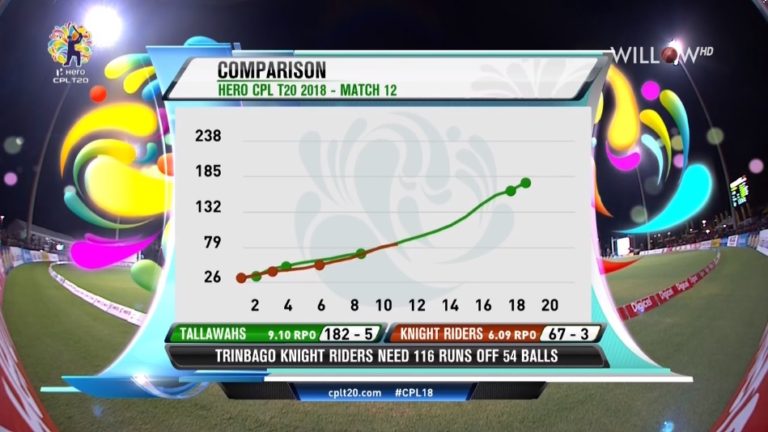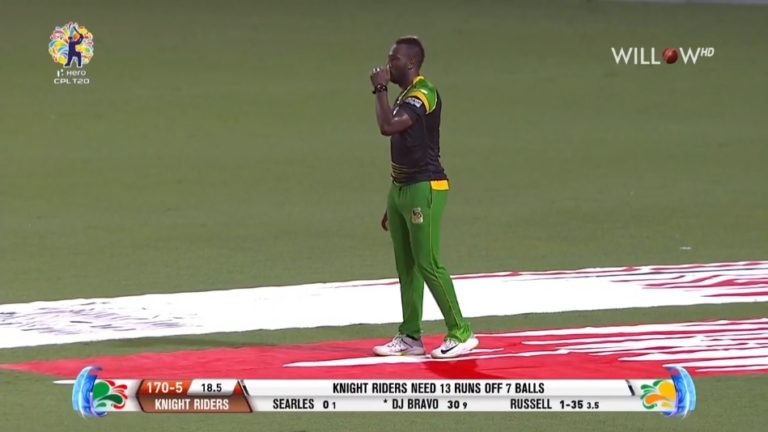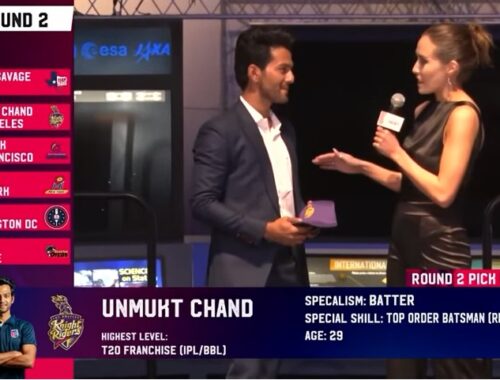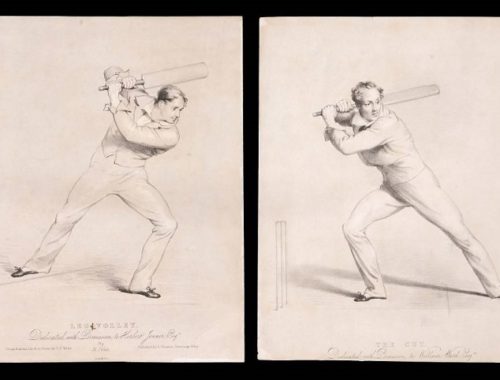
Understanding the TV Screen
Hopefully, if you've gone through the entire Rules section, you have a decent sense of how cricket is played. You understand the structure of the game -- how innings work, how runs are scored, what overs are, etc. You know the role and responsibilities of the bowler and the batsman. And you know where the game is being played and who's playing.
More hopefully, that understanding has inspired you to try to track down some cricket to watch from one of the streaming services I talked about on the Resources page.
While initially, the TV screen may look like a confusing jumble of numbers, all the information that's up there is stuff that you already know about. Understanding what the numbers on the screen mean will let you jump right into a game at any point and be quickly brought up to speed with what's going on.
Just like with baseball, football, basketball, etc., different broadcasters and networks will have a slightly different look to their screen. And just like in those other sports, some broadcasters do it a little bit better. They'll use easier to read numbers, more relevant information presented more frequently, etc.
Here are some screens from the Willow streaming service. The first is from the recent Test series between the West Indies and England.

First off, you should be able to figure out by the all-white uniforms that this is a Test cricket match. The country logos tell you who's playing. On the left side of the info bar, the "ENG" -- as well as England's logo -- tells you that England is batting. The 125-9 -- pronounced "125-for-9" -- means that they've scored 125 runs and have given up 9 wickets. The "Lead by 6 Runs" means that they're currently leading the West Indies by 6 runs. In baseball, that can be a safe lead. Here, though, since they've already given up 9 of their 10 wickets, their innings is almost over and it will be a very tough to lead to preserve.
Anderson and Curran are the batsman. The mark next to Jimmy Anderson's name means that he's the striker and that Sam Curran is currently the non-striker. Anderson has scored 0 runs off of the 1 ball he's faced, while Curran has 6 runs off of 4 balls.
Under the batsmen is the bowler. Kemar Roach has taken 4 wickets and given up 46 runs in 11.2 overs. That's a really good bowling line. It's kind of like striking out eight or ten batters in a baseball game.
What I like about this screen is that directly under Anderson's name is a ball-by-ball summary of Roach's current over. Since we know that's he's bowled 11.2 overs, he's currently 2 balls into his latest 6-ball over. The W means that the first ball was a wicket and the dark circle means that no runs were scored off his second ball. The term for a ball that no runs are scored against is a "dot ball." The dark circle is actually a dot. The results of his next four balls will be filled in next to the W and the dot. (And the ".2" in 11.2 doesn't refer to him being 20-percent through his over; the number after the decimal point will only go as high as 5. His next four balls will be 11.3, 11.4, 11.5, 12.)
A mid-game screen that's really helpful in understanding the momentum swings of the match is the "worm."
Here's the worm from a CPL game between the Jamaica Tallawahs and the Trinbago Knight Riders played in Florida this past summer. I was at this game!

The worm is shown during the innings of the team that bats last. It shows their rate of scoring runs versus their opponent. The large dots show at what point each team lost a wicket. Since this screen is a from a T20 match, it tracks scoring from the first over to the 20th and final over. Here, you see that after eleven overs, both teams had an almost identical number of runs and had each lost three wickets.
From what you learned from the previous screen, you can see that Jamaica finished with 182 runs while losing 5 wickets. Trinbago (refering to the combined islands of Trinidad and Tobago), therefore, is chasing 183. All they have to do is beat the Tallawahs total by a single run.
A cool bonus statistic is the RPO number next to the team names. Jamaica averaged 9.10 runs-per-over in their innings, while the Knight Riders have averaged only 6.09 so far. Generally, the deeper you get into a T20 innings, the more aggressive batters become, so RPO numbers (the average number of runs scored for every six balls bowled) tend to increase as the match goes on. T20 and ODI runs-per-over tend to dwarf the averages from Test cricket. In Test cricket, a decent score might be 300 runs in 100 overs, which is a RPO of 3.00.
Finally, here's a screen from late in the match...

Trinbago now has 170 runs , but have lost 5 wickets. And while you could do the math yourself, the screen conveniently tells you that they need 13 runs off of 7 balls to win. On-screen is Andre Russell about to bowl for Jamaica. You may remember him from the Fun from Bangladesh blog post.
I wasn't going to give away how the game ends, but I changed my mind. The Knight Riders won the game on the very last ball when Javon Searles slapped a 4-run boundary to the opposite field. It was an amazing sporting event by any measure and despite the fact that it was played in the United States, it got virtually no coverage here.
And just as I was going to try to explain just what a "tallawah" is, I hopped onto to Twitter and saw this...

So now you know.




